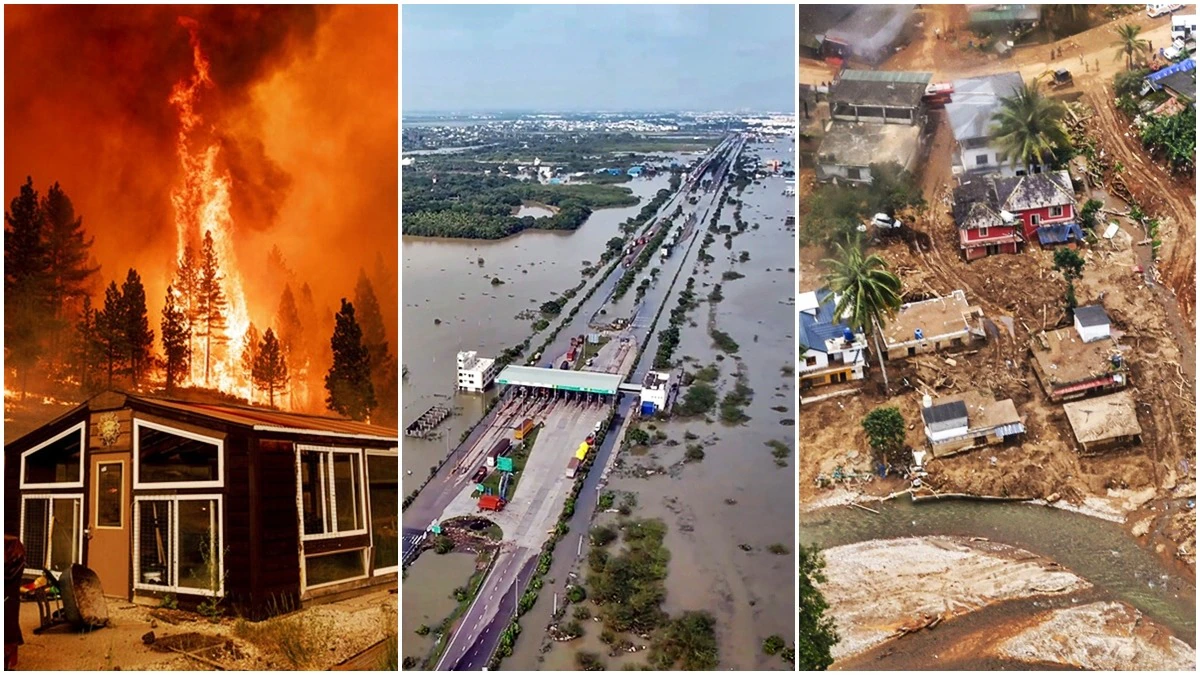
Extreme Weather Events in India: A Growing Threat
I recently came across a report that painted a rather grim picture of India’s battle against extreme weather events. The data presented by the Centre for Science and Environment (CSE) is nothing short of alarming. The report reveals that in the first nine months of 2024 alone, India experienced adverse weather conditions on a staggering 93% of days, leading to the loss of over 3200 lives, destruction of 2.3 lakh houses, and significant agricultural losses.
The report also highlights the disproportionate impact of these extreme weather events on certain states. Madhya Pradesh, for instance, faced adverse weather for 176 days, the highest among all states. Kerala bore the brunt of human loss with 550 fatalities. Moreover, Andhra Pradesh reported the highest number of houses damaged, with over 85,000 being destroyed.
The data further underscores the severity of the situation. The first nine months of 2024 saw some of the most extreme weather conditions in recent history. January was the ninth driest January since 1901, while February recorded the second-lowest minimum temperature in the last 123 years. May witnessed the fourth-highest maximum temperature on record.
The Implications
These figures underscore the urgent need for India to adapt to a rapidly changing climate. The frequency and intensity of extreme weather events are likely to increase in the coming years, posing a significant threat to the country's economy, infrastructure, and people. The agricultural sector, which is already facing numerous challenges, is particularly vulnerable.
What needs to be done?
To address this growing crisis, we need a multi-pronged approach. Here are a few ideas:
• Enhanced Early Warning Systems: We need to invest in more sophisticated early warning systems to provide timely alerts about impending disasters. This will allow for better preparedness and evacuation efforts.
• Climate-Resilient Infrastructure: Building infrastructure that can withstand extreme weather events is crucial. This includes constructing flood-resistant houses, strengthening dams and embankments, and developing heat-resistant urban planning.
• Sustainable Agriculture: Promoting sustainable agricultural practices can help farmers adapt to changing climatic conditions. This includes adopting drought-resistant crops, improving soil health, and implementing efficient irrigation systems.
• Afforestation and Reforestation: Increasing forest cover can help mitigate the impacts of climate change. Trees absorb carbon dioxide, reduce soil erosion, and help regulate rainfall.
• Disaster Risk Reduction: Investing in disaster risk reduction measures can help minimize the impact of extreme weather events. This includes developing evacuation plans, conducting regular drills, and providing disaster relief supplies.
• Research and Innovation: Continued research and innovation are needed to develop new technologies and strategies for adapting to climate change.
• Policy Reforms: Governments at all levels need to implement policies that promote climate resilience. This includes incentivizing sustainable practices, investing in renewable energy, and enforcing environmental regulations.
The Role of Community Engagement
While these measures are essential, it is equally important to engage communities at the grassroots level. Prime Minister Narendra Modi has rightly emphasized the need to shift the climate change discourse from conference tables to dining tables. This underscores the importance of involving ordinary citizens in the fight against climate change.
Non-governmental organizations (NGOs) and educational institutions can play a pivotal role in fostering community engagement. They can organize awareness campaigns, workshops, and training programs to educate people about climate change and its impacts. Moreover, they can facilitate the development of community-based initiatives to address local challenges.
I have personally witnessed the power of community engagement through my initiative, "Satyagraha Against Pollution and Climate Change," which I started in 2021. By reaching out to over three lakh youth, I have seen firsthand how young people are eager to contribute to the cause. However, there is still a long way to go.
The challenge of climate change requires a collective effort. By working together at the individual, community, and government levels, we can mitigate the impact of extreme weather events and build a more sustainable future for India. As Prime Minister Modi has rightly stated, the fight against climate change is not just a government's responsibility but a collective responsibility. It is time for us to move beyond rhetoric and take concrete steps to address this pressing issue.